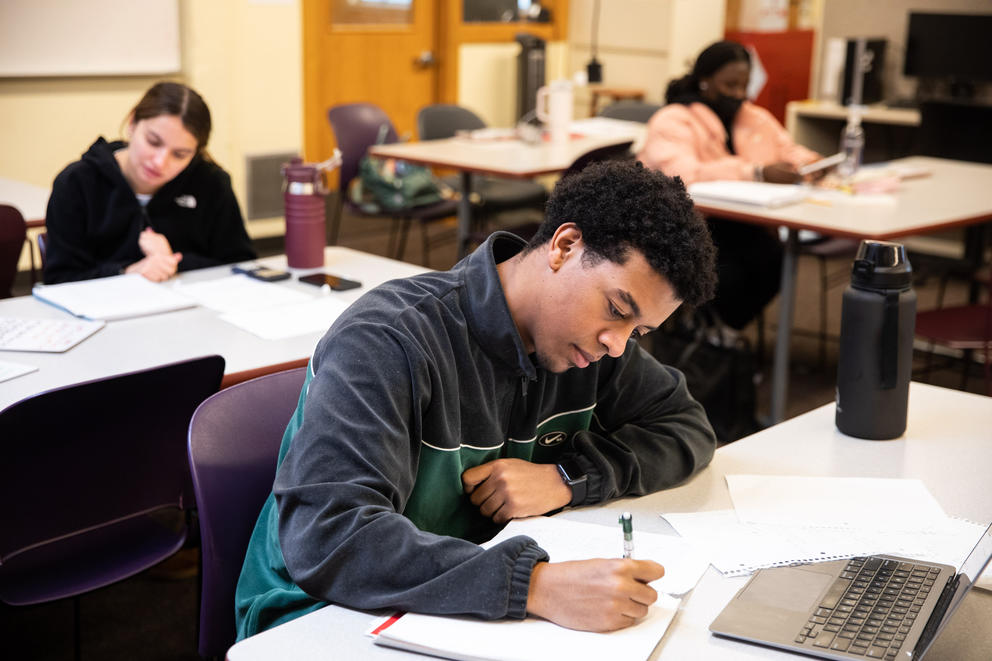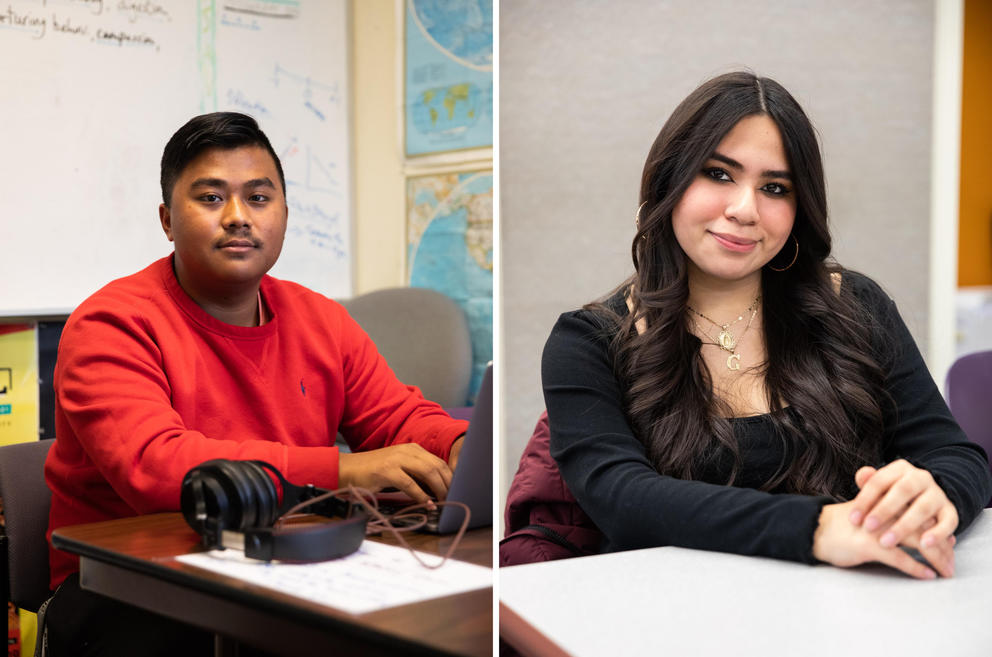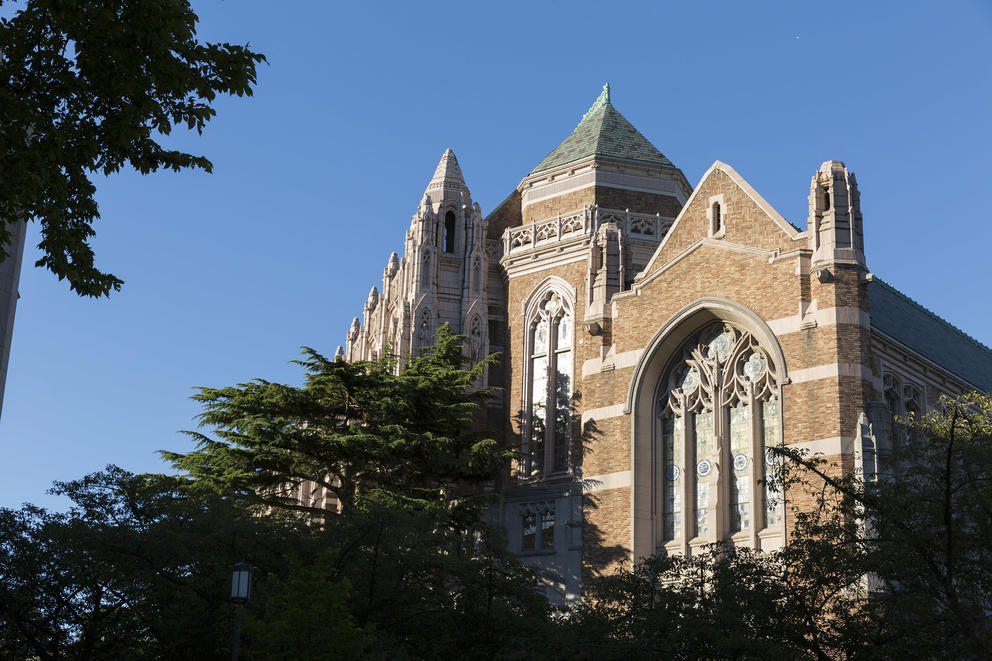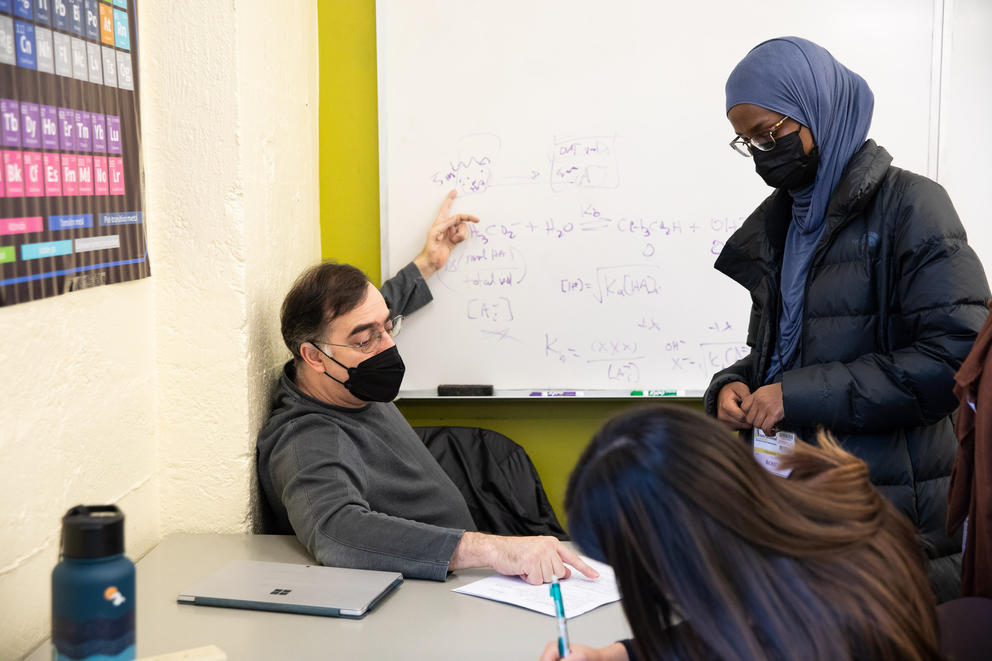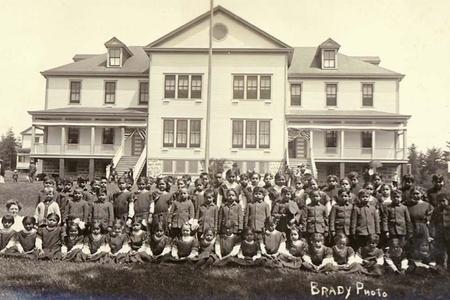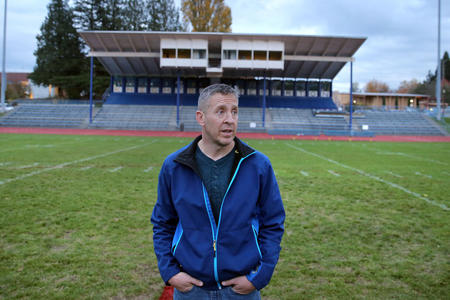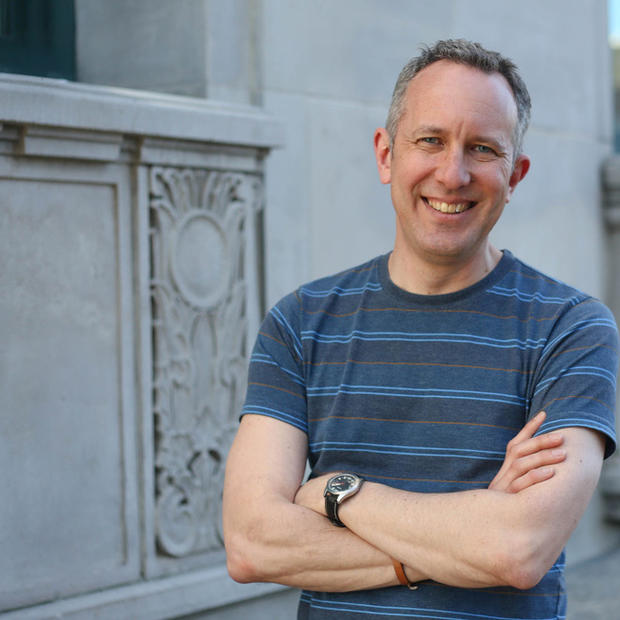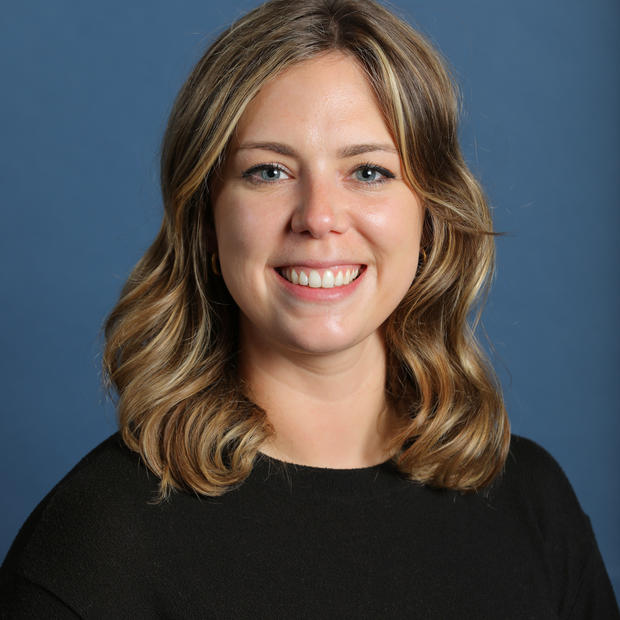The University of Washington, like many other institutions of higher education in the United States, has sought to create the kind of diverse student body Argaw would like to see. But for 25 years it has had to do so without one critical tool: affirmative action. That is because affirmative action has been illegal in the state since 1998, when the state’s voters passed Initiative 200, which prevents government entities from using race as a factor in hiring or admissions. Eight other states have also banned affirmative action: Arizona, California, Florida, Idaho, Michigan, Nebraska, New Hampshire and Oklahoma. Texas joined that group because of a court decision and other courts have chimed in on affirmative action, contributing to the nation’s patchwork of rules on this issue. The movement has spread slowly, but that might be about to change.
In October, the U.S. Supreme Court heard two cases challenging admissions programs at Harvard and the University of North Carolina, with the conservative majority widely expected to reject affirmative action at the national level when it issues a ruling later this year.
The group Students for Fair Admissions first filed cases against the two universities in 2014, hoping to overturn the 2003 ruling by a more liberal Supreme Court in the case Grutter v. Bollinger, which affirmed that the University of Michigan could use a student’s race as one of multiple factors in admission decisions. The group contends the University of North Carolina’s policies violate the equal protection clause of the 14th Amendment, while arguing Harvard’s affirmative action plan discriminates against Asian American students, violating Title VI of the Civil Rights Act of 1964.
Affirmative action was clearly on the agenda when President Donald Trump appointed three conservative justices to the bench, and now the long-range importance of who is elected president is coming home in ways few voters understood before the 2016 election.
Also on the agenda this year before the U.S. Supreme Court: immigration, student debt, the religious rights of employees, foster care for Native American children, freedom of speech and free and fair elections.
Depending on how the court rules, the nation’s colleges and universities may soon have to address a question UW administrators have been grappling with for decades: Can you increase diversity and offer a welcoming environment for underrepresented minorities without affirmative action?
The short answer is: to some degree. But according to students, academics and administrators, it’s an uphill battle.
Rickey Hall, UW’s vice president for minority affairs and diversity, says that enrollment from underrepresented populations plummeted at UW shortly after the passage of I-200, but in the ensuing decades has gradually climbed. In the fall of 2023, 17% of students at all UW campuses were either Black, Latino, or mixed-race. And while those rates are somewhat in line with the demographics of graduates from the state’s high schools, it’s still insufficient, Hall said.
“A test for me is when I can look out and look at Red Square, and in an hour, if I see several African Americans, that’s a pretty good indicator,” he said. But Hall believes the university can, and needs to, do better. “I still hear too many stories of folks talking about being the only one in their class – even large classes,” he said.
Left: Junior Mausom Tamang at the UW Instructional Center. Through the Center, Tamang found the one-on-one support he had been missing in his huge classes. “I could ask: 'Hey, how do you solve this?' That’s what really helped me succeed, and my grades started to improve.” He is now a third-year geography major focusing on data science.
Right: Freshman Guadalupe Luna, who grew up in Los Angeles and whose parents are from Mexico, comes to the Center each day to get help with math. Luna heard about the Center through the computer science department’s Startup program, which assists first-generation and low-income students. (Amanda Snyder/Crosscut)
In 2019, Referendum 88 offered Washington voters an opportunity to end the state’s ban on affirmative action, but the measure failed by a narrow margin. In January 2022, Gov. Jay Inslee rescinded a 1998 proclamation meant to enforce the provisions of I-200, and issued a new proclamation that gives entities in state government the authority to recruit in employment and admissions with the intent of expanding racial and ethnic diversity. “That's legal in the state of Washington per the executive order from Inslee,” says Mark Long, a former policy researcher at UW. But Washington’s universities have not really taken advantage of this opening.
Paul Guppy, a critic of affirmative action and a policy analyst at the Washington Policy Center, says using race as a factor in admission is wrong, even though he believes correcting years of discrimination and achieving diversity on college campuses are desirable goals. “When institutions begin to judge applicants based on race,” Guppy said, “there’s always going to be somebody who’s harmed by that.”
We’ll find out soon how many justices on the U.S. Supreme Court agree. The court has ruled twice in favor of affirmative action in 1978 and 2003, but now seems ready to jettison the practice, with Justice Clarence Thomas musing during the hearing on the University of North Carolina case last year that “I’ve heard the word ‘diversity’ quite a few times, and I don't have a clue what it means.”
Long notes that affirmative action is one of the most efficient ways to ensure a school has a wide variety of students. He notes that Texas, for instance, in 1997 instituted automatic admission to all the state’s public colleges and universities for the top 10 percent of its high school graduating classes in an effort to boost minority enrollment after the 1996 federal appeals court ruling Hopwood v. Texas banned affirmative action in that state. But Long says his research shows this automatic admissions policy got Texas only about a third of the way back to the racial-equity gains achieved formerly by affirmative action. Nothing works as well at boosting rates of minority admission as using race as a factor, he says.
“One of my advisors once quipped that nothing correlates with race like race,” Long said.
Rickey Hall, UW’s vice president for minority affairs and diversity, says that enrollment from underrepresented populations plummeted at UW shortly after the 1998 passage of I-200, but since then has gradually climbed. In the fall of 2023, 17% of students at all UW campuses were either Black, Latino, or mixed-race. (Paul Christian Gordon for Crosscut)
A study published in 2020 by Long and Nicole Bateman of the Brookings Institution found that in the 10 states that have either banned affirmative action or had court rulings preventing its use, enrolled students who are Black, Latino, or American Indian were underrepresented by an average of 16% below the populations of those groups graduating high school.
“That degree of underrepresentation has, in general, not improved and in some cases gotten a little worse over the 20 years since these bans were put in place,” said Long, now dean of the University of California, Riverside’s School of Public Policy. California started the trend toward affirmative action bans when the University of California Board of Regents voted to end affirmative action programs on its campuses in 1995. The decision to no longer use race, gender, ethnicity or national origin as a factor in admissions took effect in 1997 for its graduate schools and 1998 for undergraduate education.
The effect has been a growing gap between the percentage of minority students at most state universities and the percentage of minority students who have graduated from state high schools. The University of California Berkeley, for instance, hit a gap of 34% in 2015. One notable exception is San Francisco State University, among the most diverse colleges in the nation.
The University of Washington has not seen an underrepresentation gap that severe, but it did experience decreasing representation after the passage of I-200.
Long’s study found that the gap between the percentage of minority students graduating from Washington high schools and the percentage enrolled at the University of Washington was 4.3% shortly after the 1998 ban, but expanded to 7.8% in 2015.
The gap varies among demographic groups. At UW’s Seattle campus in fall 2022, for instance, only 9.7% of UW undergrads were Latino, compared to 15% of Washington high school graduates. But students identified as Black made up 4.8% of the undergraduate population, compared to 4.3% of the state’s high school graduates.
Hall attributes UW’s recent success at increasing its number of Black undergraduates to an aggressive outreach and recruiting strategy. The Office of Minority Affairs’ recruitment office – with a staff of eight and an annual budget of more than $475,000 – targets high schools across the state that have high populations of Black, Latino, and American Indian students. This recruitment program traces its history back to 1965, when UW’s Talent Search sought to identify and assist individuals from disadvantaged backgrounds.
Like many universities across the nation, UW reformed its admission policies in the early 2000s to take what he calls a “holistic” approach by balancing GPA and test scores with extracurricular activities and other lived experience, Hall said.
Still, Long said that despite these efforts, universities such as UW are at best making only small gains in truly increasing diversity. “These things that universities are doing are laudable, but they're basically just keeping the existing extent of underrepresentation and not dramatically improving it,” he said.
Hall conceded more work needs to be done, especially to encourage Latino and American Indian students to apply. “That's part of the challenge for us,” Hall said. “We need to convince those students that if they come here, there's going to be a community for them.”
To that end, Hall said, UW is asking the Legislature this session for money to build a new center on campus for Native American and Alaska Native students, as well as to support a bill that would create a state scholarship program for Indigenous students. That bill did not make it out of committee in the House.
The centerpiece, however, of UW’s efforts to welcome and support minority students – especially those whose parents didn’t go college – is the Office of Minority Affairs’ Instructional Center. The nationally renowned support center opened in 1970, and offers an array of classes, tutoring sessions, peer mentoring and a venue for minority students to connect.
Argaw, the second-year computer science student, comes to the Center daily, and in fact first began coming when he was 10 – accompanying his father, who has worked there as a math instructor for many years. “Watching my dad help all these students, it just kind of gave me an idea of what my future could be like,” he said.
Being among the 5% of Black students at UW hasn’t been a huge challenge, Argaw says, but it’s noticeable, and he’s seen friends struggle with it. “It can be hard, especially if you have that imposter syndrome, feeling like you’re not supposed to be here,” he said. “It adds to it when you don’t see your own people.”
Guadalupe Luna, a first-year student who grew up in Los Angeles and whose parents are from Mexico, also comes to the Center each day to get help with math. Luna heard about the Center through the computer science department’s Startup program, which assists first-generation and low-income students.
“I haven’t met many other Mexican students,” Luna said, noting that it was a big leap for her to move to Seattle, where she didn’t know anyone. “It would be nice to meet more, but I have met a mix of different people and we became close friends.”
Like Luna, most of the 2,000 students served by the Instructional Center each year come for support in core STEM classes including calculus, statistics, chemistry and biology – but also for assistance writing papers for English classes or studying for midterms in psychology. The university identifies those most in need of tutoring services through its Educational Opportunity Program, which provides assistance to some 6,000 students who come from underrepresented minorities or are low-income or first-generation.
“So many of our students here are incredibly bright and hard-working,” said Therese Mar, the Center’s director. “But many of them haven’t had opportunities from their high school – no AP classes, no enrichment programs. So they come here underprepared,” Mar said.
While many Asian American students – a minority group that has in recent years not been underrepresented in college attendance – aren’t generally eligible for the Center’s services, there are exceptions.
Mausom Tamang, originally from Bhutan, spent his early childhood in a refugee camp in Nepal until his family was granted asylum in the U.S. and moved to Kent when he was 8. Tamang qualified to use the UW Instructional Center because he’s the first in his family to go to college and because of his refugee status (he’s a member of a Hindu minority group that has struggled for recognition in Bhutan, and which includes more than 85,000 people who’ve resettled in the U.S.).
Tamang, who grew up in Kent and graduated from Foster High School in Tukwila, still lives with his parents and commutes two hours to and from UW each day. When he started classes at UW in the fall of 2020, it was in the midst of the pandemic. Getting help in courses of sometimes more than 700 students on a Zoom call was a bewildering experience. “It was a big struggle,” Tamang said, “not knowing how to navigate through classes. The worst thing was I didn't have guidance. I didn't know how to ask for help.”
After nearly failing several classes and afraid of disappointing his parents, Tamang says he fell into depression. Then he found the Instructional Center and connected with a tutor online (the Center was all-virtual during the early pandemic). “I was kind of nervous the first time, but I met with one of the instructors and started to build relationships,” he said.
Through the Center, Tamang found he could get the one-on-one support that had been missing in those huge classes. “I could ask, ‘Hey, how do you solve this?’ That’s what really helped me succeed, and my grades started to improve.”
Now a third-year geography major focusing on data science, Tamang hasn’t found much of a Nepali or Bhutanese community at UW yet, but he’s built friendships through the Brotherhood Initiative, a peer support program for men of color on campus, which also helped him build confidence. “Knowing how to go out of your comfort zone is one of the most crucial things you can do here,” Tamang said.
Hall said other colleges can learn from UW’s efforts to create a more welcoming environment for students like Tamang, and see a more diverse pool of applicants as a result. “You have to work harder if you actually have a commitment to diversity,” he said.
“Some folks try to make this about being politically correct,” Hall said. “For us here at the University of Washington, it’s really about preparing our students to live in and lead in a global world with rapidly shifting demographics. That’s the reality some people don’t want to hear.”
Since attending the center in person, Tamang says he’s also made friends with an instructor whose husband is Nepali. “That made it even more like home because we got this conversation going regarding food and culture,” he said.
“This is a place where I just feel like I’m surrounded with warmth.”
CORRECTS spelling of chemistry instructor Scott Clary's name in a caption.
Listen to reporter Andrew Engelson discuss this story on the Crosscut Reports podcast:

